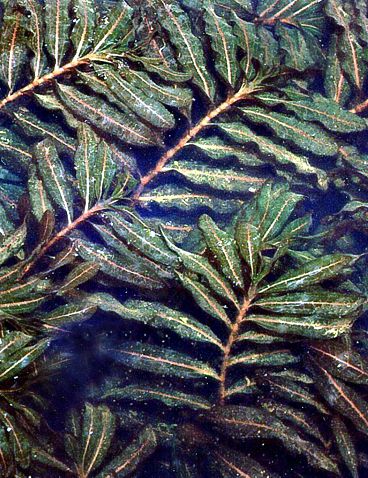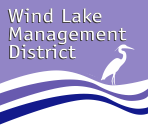
Aquatic Plants - WEEDS
Aquatic plant management is a large portion of the WLMD budget. Aquatic plants, or weeds as many refer to them, are a very important part of a lake. They really are the foundation of a healthy lake.
Waterfowl, mammals, invertebrates, macro-invertebrates and fish, all depend on various plants for their food, their spawning habitat, their rearing habitat and/or shelter. Near-shore plants stabilize the sediments, reduce erosion and buffer waves and currents. Aquatic plants can improve the water quality in a lake. They absorb nutrients that would otherwise be used to fuel algae growth.
Wisconsin DNR allows property owners and lake groups to manage the aquatic plants in their lake. Requests for management permits usually begin when there are nuisance conditions. Although that sounds simple enough, even defining nuisance conditions can be difficult. Anglers prefer more weeds than swimmers. Hunters prefer more weeds than boaters. Since the lake provides users with a wide range of activities, conflicts over plant management can exist.
Native plants tend to be more readily accepted by lake residents. They are usually lower growing and less dense than exotic species. Exotic species can quickly fill the water column, choking out areas and inhibiting use for both people and game fish.
WLMD uses a variety of tools to manage aquatic plants:
Chemical Treatments
Harvesting
Roadside weed pickups
Chemical treatments usually target exotic species such as Eurasian Watermilfoil and curly-leaf pondweed. In areas with limited access, broader control may be used to ensure navigational access. Shorelines zones, generally 150 ft. out from shore, are the primary chemical treatment areas.
Harvesting is also used but on a more limited basis. When needed, a contractor is hired to cut and remove dense weeds from open water areas of the lake. This minimizes weeds from being cut by boats and ensures lake users access to various parts of the lake.
Roadside weed pickups are conducted to make it easier for property owners to keep their shorelines clear of plant debris. Property owners rake and remove the plant material and place it along the side of the roads, on a schedule determined at the beginning of each year.
Invasive Algae Found in Wind Lake
Starry Stonewort (Nitellopsis obtusa L.), (pictured below) was found in Wind Lake on August 15, 2017. First found in Wisconsin in Little Muskego Lake in 2015, Wind Lake is the seventh lake to be infested. This is a very difficult algae to control. More information can be found at the UWEX Lakes Starry Stonewort Clearinghouse Website.
Aquatic Plant Management Plan
Current Chemical Treatment Permit
Proposed Chemical Treatment Area
2024 - 2028 Harvesting Permit
